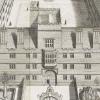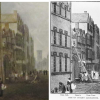Robert Boyle (1627-1691)
External links
Commentary
Image 1: Portrait of Robert Boyle
Author and Date: unknown. Medium: Oil on Canvas. Size: 127 x 102.5 cm. Location: Wellcome Library, no. 47317i. Licence: CC BY 4.0.
Image 2: Name: Engraving of Robert Boyle
Author: Johann Kerseboom (d. 1708). Date: unknown. Medium: engraving. Published by François Morellon La Cave (c. 1700-1766) in Universal Magazine, 1753. Source: Wellcome Library no. 1323i. Licence: CC BY 4.0
Image 3. Mezzotint of Robert Boyle
Author: Johann Kerseboom (d. 1708). Date: 1689. Medium: Mezzotint. Location: Wellcome Library no. 1315i. Licence: CC BY 4.0.
Resources
An excellent introduction to Boyle by Michael Hunter is provided on the website of The Boyle Project, which also provides a rich collection of digital resources and regularly updated news on developments in Boyle studies.
An introduction to Boyle can be found on Melvyn Bragg's BBC 4 programme, 'In Our Time'. 'Melvyn Bragg and his guests [Simon Schaffer, Michael Hunter, and Anna Marie Roos] discuss the life and work of Robert Boyle, a pioneering scientist and a founder member of the Royal Society. Born in Ireland in 1627, Boyle was one of the first natural philosophers to conduct rigorous experiments, laid the foundations of modern chemistry and derived Boyle's Law, describing the physical properties of gases. In addition to his experimental work he left a substantial body of writings about philosophy and religion; his piety was one of the most important factors in his intellectual activities, prompting a celebrated dispute with his contemporary Thomas Hobbes.'


